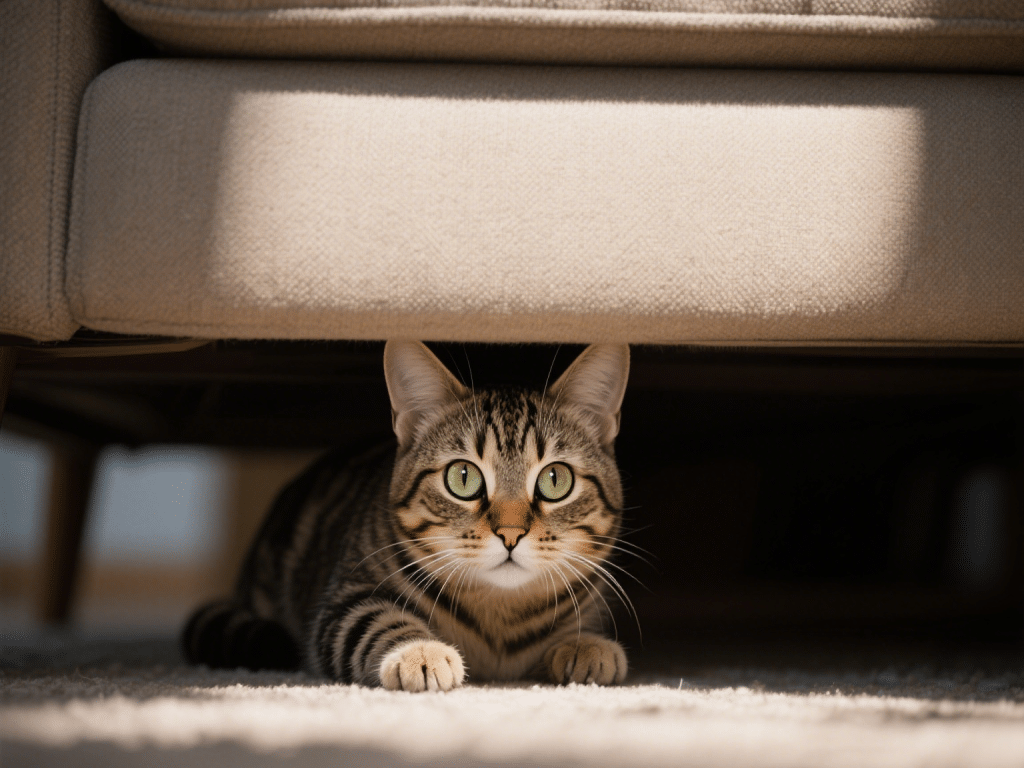
Grooming Sensitive Dogs: Tips for Gentle Baths and Skin Care
Dogs with sensitive skin require an especially thoughtful grooming routine. Harsh shampoos...

Every cat parent wants a happy, relaxed companion—but even the most pampered kitty can experience stress. Unlike dogs, cats often mask discomfort until it becomes serious. Spotting the subtle signs of anxiety or tension early is critical for your cat’s well-being. Drawing on over a decade of feline behavior study and veterinary consultation, I’ll help you decode stress signals, understand triggers, and implement calming strategies that restore your home’s serenity.
Cats communicate stress not with barks but with nuanced body language and behavior shifts. Watch for:
Excessive Grooming: Bald patches or red skin from over-licking.
Changes in Litter-Box Habits: Straining, frequent urination, or accidents outside the box.
Loss of Appetite: Skipping meals or gulping food too quickly.
Vocal Changes: Increased yowling, growling, or uncharacteristic silence.
Hiding & Avoidance: Remaining under beds or in closets for extended periods.
New Family Members: Babies, housemates, or visitors can disrupt routine.
Home Renovations: Noise, dust, and blocked pathways create anxiety.
Moving: New smells and layouts overwhelm feline senses.
Multi‑Cat Dynamics: Competition for resources or territory.
Introduction of Other Pets: Dogs or unfamiliar cats may trigger fear.
Pain or Illness: Arthritis or dental issues can manifest as stress.
Sensory Decline: Vision or hearing loss creates disorientation.
Stress in cats triggers a cascade of hormones—cortisol and adrenaline—in the adrenal glands. While short‑term “fight or flight” is natural, chronic activation impairs immunity, digestion, and emotional health. Recognizing and interrupting this hormonal cycle preserves your cat’s quality of life.
Vertical Territory: Cat shelves, trees, and window perches give cats a sense of control.
Hiding Spots: Cardboard boxes or covered beds provide safe retreats.
Rotating Toys: Novelty reduces boredom and promotes healthy play.
Consistent Schedules: Feed, play, and cuddle at the same times daily.
Quiet Zones: Designate low‑traffic areas with soft lighting for relaxation.
Feliway Diffusers: Synthetic feline facial pheromones that signal “safety.”
Cat‑Friendly Calming Treats: Ingredients like chamomile or L‑theanine.
Scheduled play sessions mimic hunting, reduce excess energy, and strengthen your bond. Aim for three 10‑minute wand‑toy chases per day before meals.
If stress behaviors persist despite home interventions, consult your veterinarian or a feline behaviorist. Persistent hiding, aggression toward people, or self‑harm from over‑grooming warrant a health check for underlying medical issues.
Takeaway: A stress‑free cat is a happier cat—and a happier home. By tuning into your cat’s language, enriching their environment, and maintaining routine, you’ll transform anxiety into contentment. Start today: observe, adjust, and watch your cat relax into the confident companion you know they can be.

Dogs with sensitive skin require an especially thoughtful grooming routine. Harsh shampoos...

Welcoming a new puppy into a home where an older dog has established routines can be trick...

Whether you’re jetting off for vacation or relocating, traveling with exotic pets—rept...

IntroductionHuman-grade treats can be expensive and full of preservatives. Preparing healt...

IntroductionRegular ear cleaning is vital for preventing infections, wax buildup, and disc...

IntroductionArthritis is one of the most common degenerative joint diseases affecting seni...
Comments on "How to Tell If Your Cat Is Stressed: Signs, Causes & Calming Strategies" :